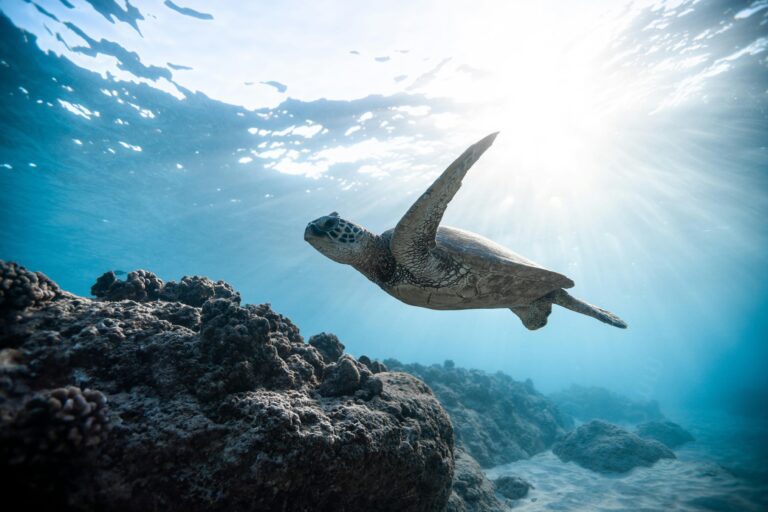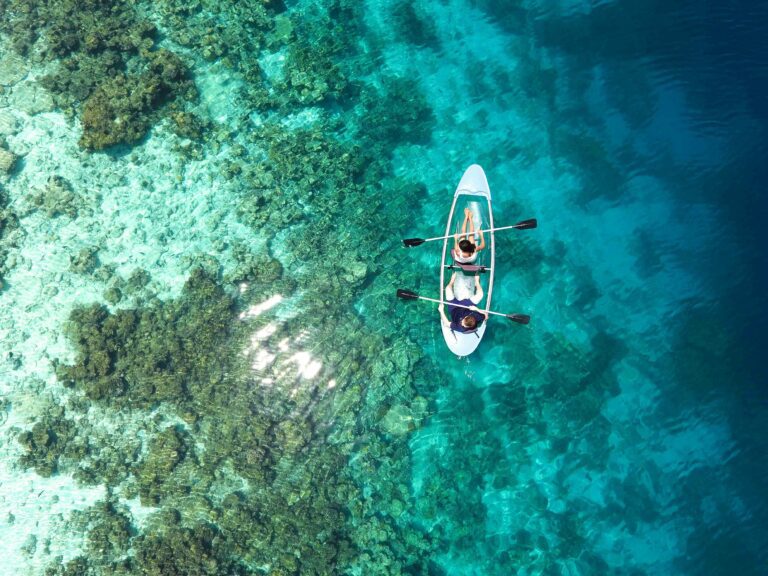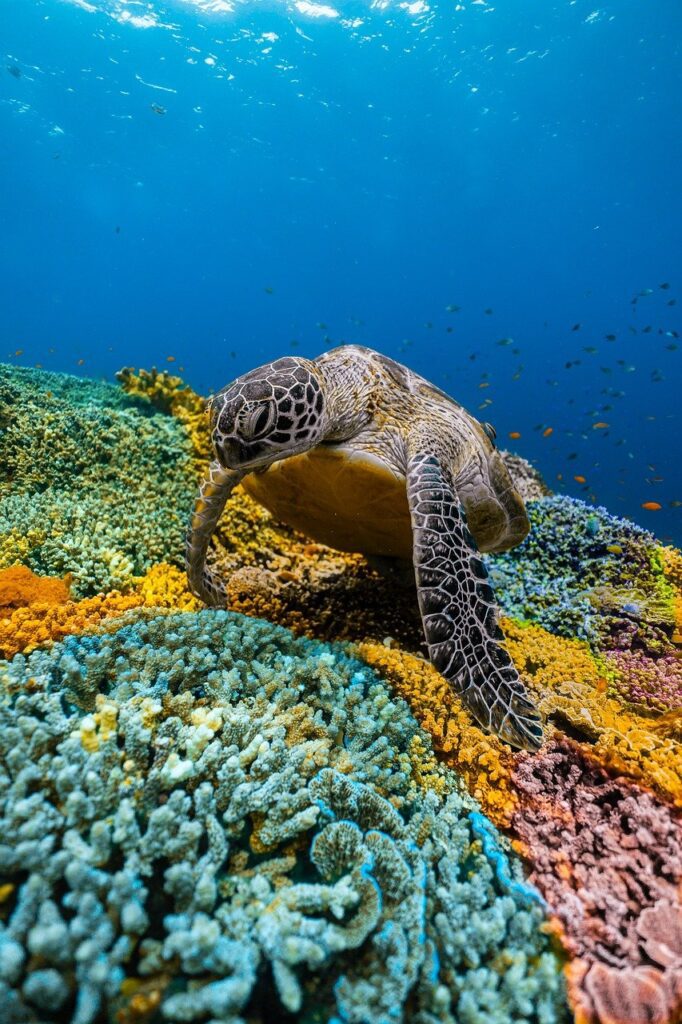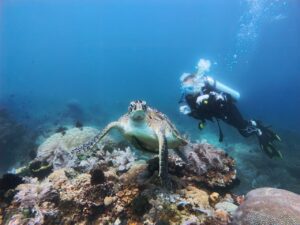Apo Reef Natural Park, located off the coast of Occidental Mindoro, The park comprises three main islands: Apo Island, Binangaan Island, and Cayos del Bajo. Each offers unique experiences, making them ideal for adventure enthusiasts and nature lovers. This guide will take you through everything you need to know about these islands, including activities, accommodations, and tips for making the most of your visit.
Exploring Apo Island
Quick Rundown
Apo Island is the largest of the three islands in Apo Reef Natural Park. It’s famous for its white sandy beaches, vibrant coral reefs, and abundant marine life. This island is a favorite among divers and snorkelers due to its crystal-clear waters and easy access to various dive sites.

What to do
- Diving and Snorkeling: Apo Island is home to numerous dive sites, including the popular Turtle Point, where you can swim alongside green sea turtles. The reef is teeming with colorful fish and corals, offering a truly immersive underwater experience.
- Hiking: For those who prefer to stay above water, there are hiking trails that lead to the island’s lighthouse. The hike offers breathtaking views of the surrounding sea and is a perfect spot for taking photos.
- Relaxing on the Beach: After a day of activities, unwind on the pristine beaches of Apo Island. The soft sands and gentle waves create a tranquil atmosphere, perfect for soaking up the sun.
Accommodation
Apo Island has several accommodation options ranging from budget-friendly guest houses to more upscale lodges. Most places are eco-friendly and cater to the needs of divers and snorkelers, providing equipment rentals and guided tours.
Discovering Binangaan Island
Quick Rundown
Binangaan Island is known for its secluded beaches and vibrant marine ecosystems. Unlike Apo Island, it offers a quieter experience, making it ideal for those looking to escape the crowds.

What to do
- Snorkeling: The waters around Binangaan Island are perfect for snorkeling. The shallow reefs are rich in marine life, making it easy to see various fish species without diving.
- Beachcombing: Take a leisurely stroll along the sandy shores, where you can discover beautiful shells and observe local wildlife.
- Camping: For the adventurous traveler, camping on Binangaan Island provides a unique way to experience its natural beauty. Pitch your tent under the stars and enjoy the sounds of the ocean at night.
Accommodation
There are limited accommodation options on Binangaan Island, primarily focused on eco-friendly camping. However, you can arrange for local guides who offer tent setups and meals, providing a rustic yet rewarding experience.
Us at Casalay Boutique Villas and Dive Resort accommodates people that want to visit around these islands. We provide 5% Off stay, diving and other activities that may make your vacation a lot easier and relaxing.
Cayos del Bajo: The Remote Island
Quick Rundown
Cayos del Bajo is the least developed of the three islands, making it a haven for those who appreciate unspoiled nature. Its stunning landscapes and calm waters provide the perfect backdrop for relaxation and exploration.
What to do
- Exploring the Beaches: Cayos del Bajo boasts pristine beaches that are less frequented by tourists. Spend your day swimming, sunbathing, or simply enjoying the serene environment.
- Birdwatching: The island is home to various bird species, making it a great spot for birdwatching. Bring your binoculars and enjoy spotting colorful birds in their natural habitat.
- Fishing: Local fishermen often offer traditional fishing experiences. Try your hand at catching your dinner while learning about the local fishing culture.
Accommodation
Cayos del Bajo does not have formal accommodations, so visitors typically arrange day trips from Apo Island or Binangaan Island. Some local operators may provide meals and guided tours for those wishing to spend more time exploring this beautiful island.
Tips for Visiting Apo Reef
- Best Time to Visit: The best time to explore Apo Reef is from November to May, when the weather is generally dry and the sea conditions are calm.
- Travel Requirements: Make sure to check local travel requirements before your visit, including permits for diving and snorkeling.
- Eco-Friendly Practices: Help preserve the beauty of Apo Reef by practicing responsible tourism. Avoid touching coral, use reef-safe sunscreen, and minimize plastic waste.
- Engage with Local Communities: Support the local economy by using local guides, purchasing handicrafts, and trying traditional foods. Engaging with the community enriches your travel experience and helps sustain the region’s culture.
Final Thoughts
The islands of Apo Reef offer an unforgettable experience for all types of travelers. By following this guide, you’ll be well-prepared to explore the beauty of this stunning marine sanctuary while supporting its conservation and local communities. Pack your bags and get ready for an unforgettable trip to Apo Reef!
Author: Zach Yanuario


